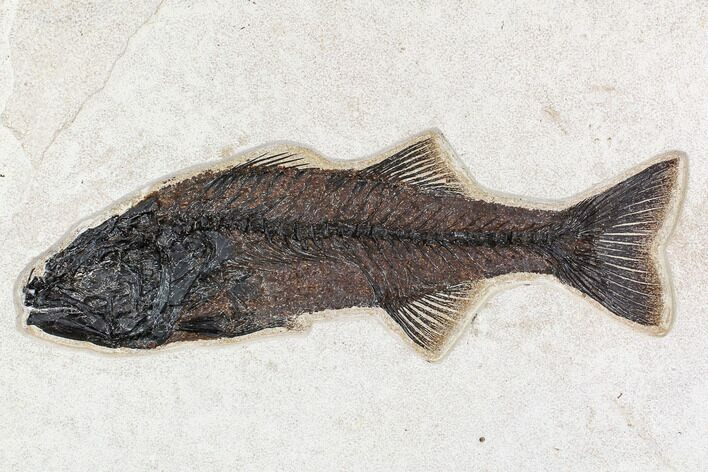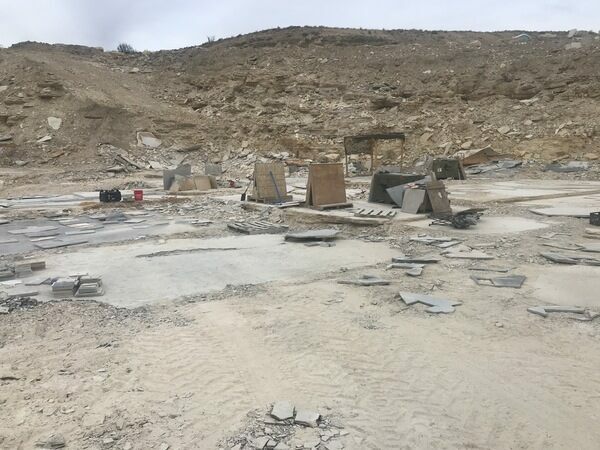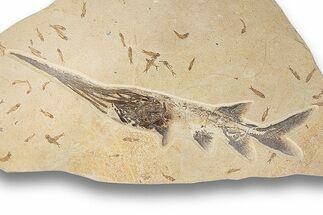This Specimen has been sold.
15.8" Fossil Fish (Mioplosus) From 18 Inch Layer - Wyoming
This is a darkly preserved, 15.8" long Mioplosus labracoides from the famous 18 inch layer of the Green River Formation. It was collected this summer from Warfield's Quarry near Kemmerer, and is one of the more uncommon species in the formation. It's nicely centered on an unbroken 20.3x14.8" slab of shale, and the preservation is dark and detailed.
The rock is thin, just over 1/2", so we'd highly recommend having us back it with hardie board for stability. We can do this an optionally install a french cleat style wall hanger at no charge.
The rock is thin, just over 1/2", so we'd highly recommend having us back it with hardie board for stability. We can do this an optionally install a french cleat style wall hanger at no charge.
About The 18 Inch Layer Of Fossil Lake
Specimens like this come from the coveted 18 inch layer of the Green River Formation, which produces darker and more detailed fish than the majority on the market. The rock from this layer is much harder and more durable than other layers in the formation, likely due to its initial deposition conditions in deep water. Because of these conditions, fish found in the 18-inch layer can be extracted whole and in excellent condition. This layer is typically collected at night using low-angle light to see the bump in the rock that the fish's backbone creates. They then cut these fish out and take them to a lab where the fish, which may be up to an inch under the surface of the rock, are meticulously extracted under microscope with hand tools.
Specimens like this come from the coveted 18 inch layer of the Green River Formation, which produces darker and more detailed fish than the majority on the market. The rock from this layer is much harder and more durable than other layers in the formation, likely due to its initial deposition conditions in deep water. Because of these conditions, fish found in the 18-inch layer can be extracted whole and in excellent condition. This layer is typically collected at night using low-angle light to see the bump in the rock that the fish's backbone creates. They then cut these fish out and take them to a lab where the fish, which may be up to an inch under the surface of the rock, are meticulously extracted under microscope with hand tools.
SPECIES
Mioplosus labracoides
LOCATION
Warfield's Quarry, Kemmerer, WY
FORMATION
Green River Formation, 18 Inch Layer
SIZE
15.8" fish on 20.6x14.8" shale
CATEGORY
SUB CATEGORY
ITEM
#107473
We guarantee the authenticity of all of our specimens.
 Reviews
Reviews













